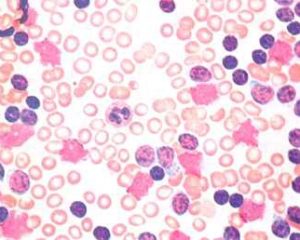This common blood test can help predict cancer.

Cancer is a terrible disease and screening tests are lacking. As part of standard blood work, a test called a CBC or complete blood count relates the number of white blood cells, hemoglobin, hematocrit and platelets. Platelets are small particles of blood that are commonly thought to work in blood clotting.
This study demonstrated that an elevation in the platelet count above 400 implied that the risk of developing cancer in the next year was increased by 20% for men and 10% for women. More studies need to be done to explore this relationship. The most common cancers developed in study were lung or colorectal cancer, and many of the patients who developed cancer had no other markers besides this increase in the CBC level.
Other conditions that can cause an elevated platelet count are: infections, poor diet, trauma, and post-splenectomy syndrome.
The Research
Br J Gen Pract. 2017 Jun;67(659):e405-e413. doi: 10.3399/bjgp17X691109.
Clinical relevance of thrombocytosis in primary care: a prospective cohort study of cancer incidence using English electronic medical records and cancer registry data.
Bailey SE1, Ukoumunne OC2, Shephard EA1, Hamilton W1.
1 University of Exeter Medical School, Exeter.
2 NIHR CLAHRC South West Peninsula, University of Exeter Medical School, Exeter.
Abstract
BACKGROUND:
Thrombocytosis (raised platelet count) is an emerging risk marker of cancer, but the association has not been fully explored in a primary care context.
AIM:
To examine the incidence of cancer in a cohort of patients with thrombocytosis, to determine how clinically useful this risk marker could be in predicting an underlying malignancy.
DESIGN AND SETTING:
A prospective cohort study using Clinical Practice Research Datalink data from 2000 to 2013.
METHOD:
The 1-year incidence of cancer was compared between two cohorts: 40 000 patients aged ≥40 years with a platelet count of >400 × 109/L (thrombocytosis) and 10 000 matched patients with a normal platelet count. Sub-analyses examined the risk with change in platelet count, sex, age, and different cancer sites.
RESULTS:
A total of 1098 out of 9435 males with thrombocytosis were diagnosed with cancer (11.6%; 95% confidence interval [CI] = 11.0 to 12.3), compared with 106 of 2599 males without thrombocytosis (4.1%; 95% CI = 3.4 to 4.9). A total of 1355 out of 21 826 females with thrombocytosis developed cancer (6.2%; 95% CI = 5.9 to 6.5), compared with 119 of 5370 females without (2.2%; 95% CI = 1.8 to 2.6). The risk of cancer increased to 18.1% (95% CI = 15.9 to 20.5) for males and 10.1% (95% CI = 9.0 to 11.3) for females, when a second raised platelet count was recorded within 6 months. Lung and colorectal cancer were more commonly diagnosed with thrombocytosis. One-third of patients with thrombocytosis and lung or colorectal cancer had no other symptoms indicative of malignancy.
CONCLUSION:
Thrombocytosis is a risk marker of cancer in adults; 11.6% and 6.2% cancer incidence in males and females, respectively, is worthy of further investigation for underlying malignancy. These figures well exceed the National Institute for Health and Care Excellence-mandated risk threshold of 3% risk to warrant referral for suspected cancer.











